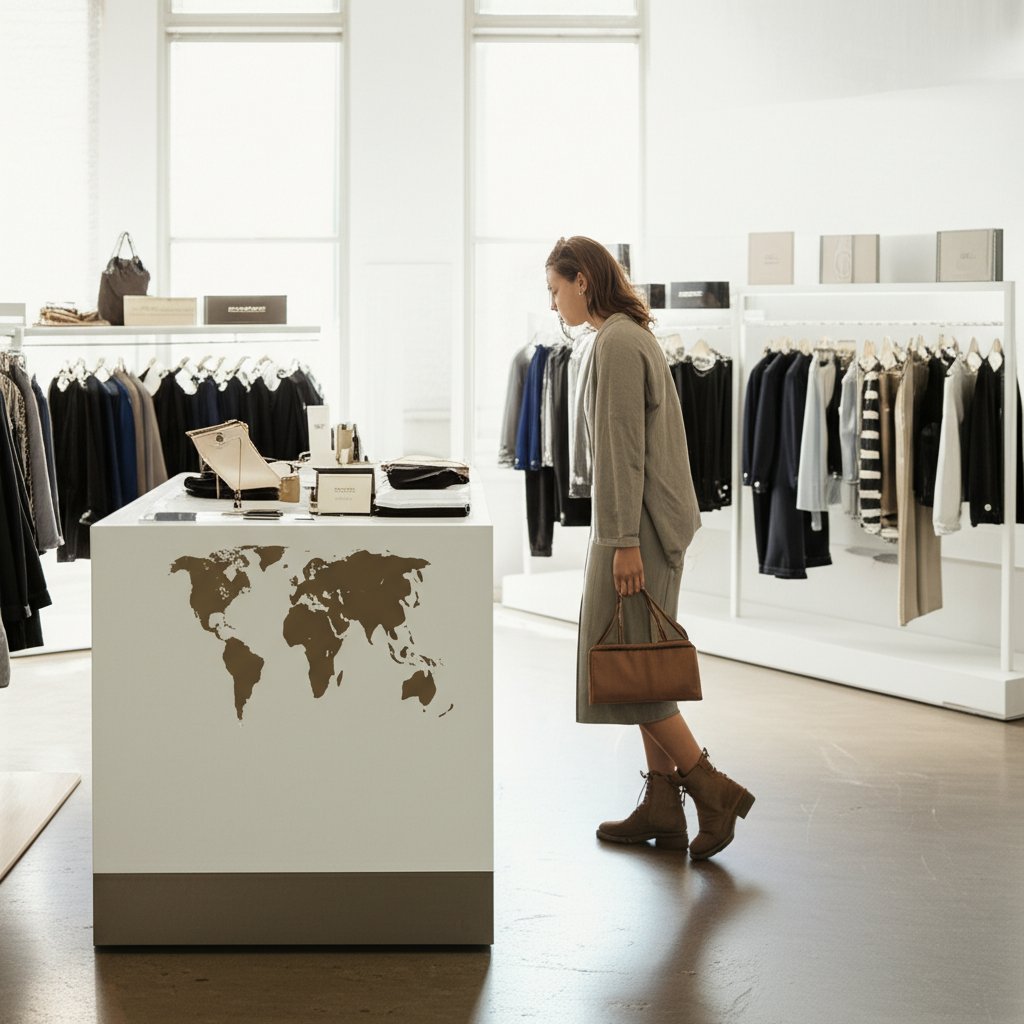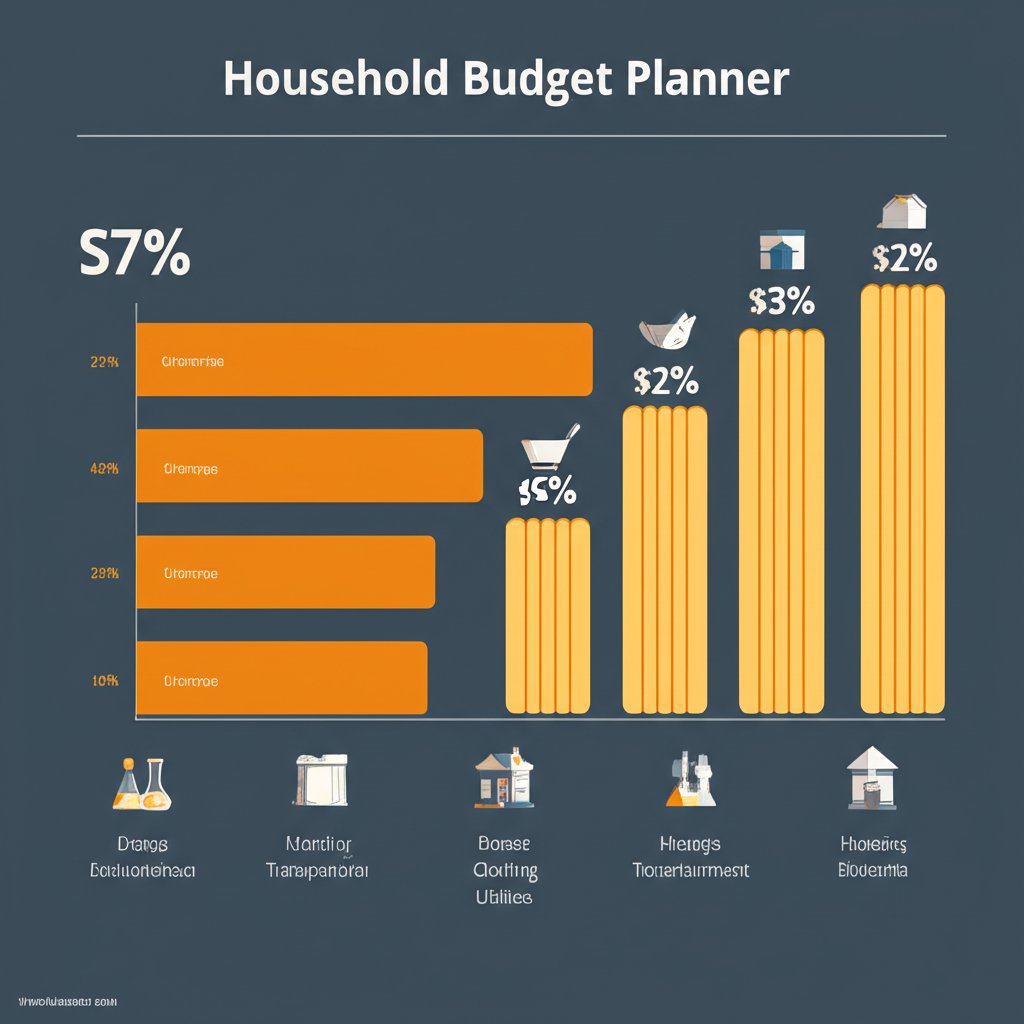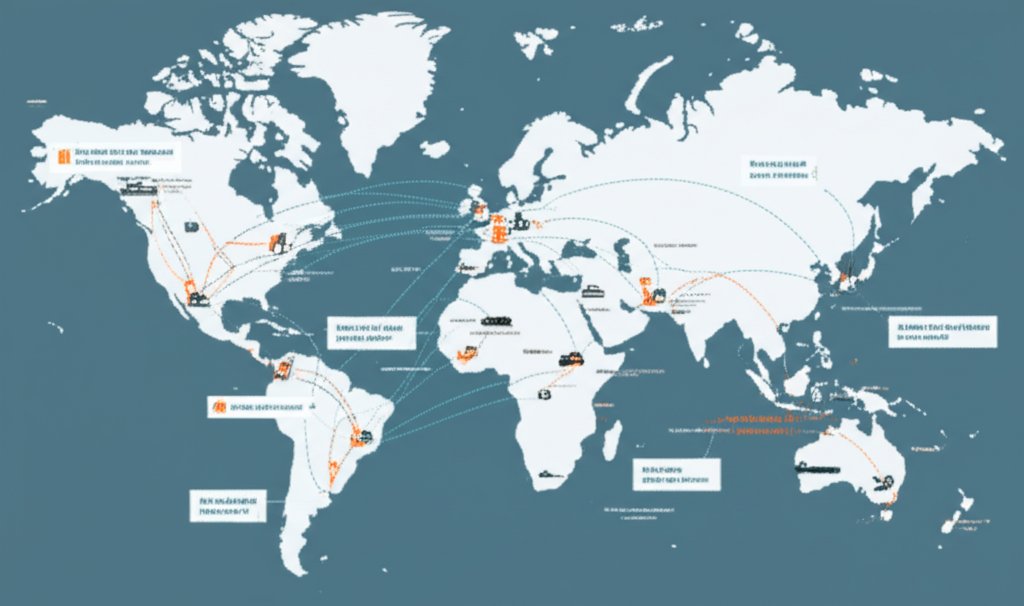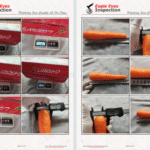
Introduction to the Effects of Tariffs on Consumers: Beyond Higher Prices
When you hear the word “tariff,” do you picture complicated government policies or just a higher price tag at the checkout? While it’s true that tariffs are taxes placed on imported goods, their impact reaches much further than most people realize. Understanding the effects of tariffs on consumers requires looking beyond the obvious, as these taxes can quietly shape your everyday life—from what you buy to how much you pay and even the choices you have in the marketplace.
At their core, tariffs are designed to protect domestic industries by making imported products more expensive. Governments often use them to shield homegrown businesses from international competition, encourage local manufacturing, or address trade imbalances. For example, the United States has imposed tariffs on everything from steel and automobiles to washing machines and solar panels, hoping to boost domestic production and jobs (Council on Foreign Relations). But while these goals may sound beneficial, the reality for households is often more complicated.
So, what does this mean for you as a consumer? The tariffs impact on households is not limited to higher prices on imported goods. Tariffs can:
- Reduce the variety of products available on store shelves, limiting your choices
- Influence the quality of goods, as companies may cut costs to offset new taxes
- Increase the overall cost of living by affecting the price of everyday necessities, from food to appliances
- Trigger ripple effects throughout the economy, sometimes leading to job losses or slower economic growth
Imagine shopping for a favorite imported snack, only to find it’s disappeared or costs much more. Or picture a new car made with pricier steel—those extra costs often get passed down to you. These are just a few ways tariffs touch daily life, often in ways you might not expect.
This article will take you beyond the surface, exploring both the direct and hidden effects of tariffs on consumers. By the end, you’ll see how these policies shape not only what you spend, but also what you can buy, and even the quality you receive. Ready to look past the price tag? Let’s dive in.

The Direct Impact
When you see prices jump on everyday items, do you ever wonder if tariffs are part of the reason? The link between tariffs and consumer prices is one of the most immediate and noticeable effects of trade policy on your household budget. But how do these costs actually reach your wallet?
How Tariff Costs Travel Down the Supply Chain
Tariffs work like a tax on imported goods. When a tariff is imposed, importers pay more to bring products into the country. But rarely do these businesses simply absorb the extra cost—they pass it along the chain:
- Importers pay the tariff at the border, increasing their cost per item.
- Wholesalers and distributors buy from importers at higher prices, adding their own markups.
- Retailers purchase from wholesalers, again passing on the increase plus their own operating costs.
- Consumers see the final price rise on store shelves or online checkouts.
Sounds straightforward, right? But the real story is more complex. Not every cent of the tariff is always passed along, and the impact can vary by product and market conditions. For example, if demand is strong or options are limited, businesses may pass nearly all of the tariff to consumers. In other cases, they might absorb some of the cost to stay competitive, at least temporarily.
Why Even “Made in the USA” Can Cost More
Think tariffs only affect imported goods? Not quite. Many domestic products rely on imported parts or materials—think electronics assembled in the U.S. with foreign-made chips, or furniture built with imported wood. When tariffs make those components more expensive, the cost of the finished product goes up, too. Plus, when foreign competition becomes pricier, domestic producers may raise their own prices, knowing they face less pressure to keep costs low (Federal Reserve).
Breaking Down the Ways Tariffs Affect Retail Prices
To make it easier to see how tariffs affect what you pay, here’s a checklist of key price impacts:
- Direct price increases on tariffed imports—these are the most visible changes.
- Indirect increases on products made with imported parts, even if the final good is assembled domestically.
- Higher prices for domestic alternatives as competition shrinks and local producers gain pricing power.
- Hidden costs built into the final price, such as increased transportation or warehousing expenses due to supply chain adjustments.
- Potential for price spillovers—where businesses spread the increase across similar products, including those not directly tariffed.
Recent research shows these effects are real and measurable. For instance, a 25% tariff on all Chinese imports could raise overall consumer goods prices by about 0.3% in the near term. If similar tariffs are applied broadly, the cumulative effect could push consumer prices up by more than 2% (Federal Reserve Bank of San Francisco). These increases may sound small, but they add up across your monthly expenses—especially when combined with other cost pressures.
The story doesn’t end with price tags. As you’ll see next, tariffs can also shrink your choices and change what’s available on the shelf, sometimes in ways that are harder to spot but just as important for your daily life.
Beyond the Price Tag
Ever walked into a store and wondered why your favorite brand or a unique imported product is suddenly missing from the shelves? Tariffs might be the hidden culprit. While most people focus on rising prices, the effects of tariffs on consumers go deeper—impacting the variety and quality of goods you can actually buy.
How Tariffs Shrink Product Variety
When tariffs are imposed, importing certain goods becomes more expensive. For many companies, this extra cost tips the balance, making it unprofitable to keep offering some products in the market. The result? Fewer choices for shoppers like you. According to economic experts, tariffs tend to “raise prices and reduce product variety—particularly for goods primarily produced abroad” (USC Dornsife). This means that everything from electronics and specialty foods to clothing and home goods could disappear or become harder to find.
- Importers may drop niche or lower-volume products that can’t absorb higher costs
- Specialty items, seasonal goods, or international brands often vanish first
- Small businesses and boutique retailers are hit hardest, as they rely on unique imports to stand out
Imagine searching for a specific type of chocolate or a popular European kitchen gadget, only to find it’s no longer stocked. These gaps in variety aren’t just inconvenient—they can limit your ability to find products that fit your tastes, needs, or budget.
Reduced Competition and Its Impact on Innovation
It’s not just about missing products. When tariffs reduce the number of foreign competitors in the market, domestic companies face less pressure to innovate or keep quality high. With fewer alternatives, you may have to settle for whatever is available—even if it’s not your preferred brand or the quality isn’t quite what you expect.
- Less competition can slow down improvements in product features or design
- Domestic manufacturers may raise prices or reduce quality, knowing consumers have fewer options
- The drive to introduce new, exciting products can stall, as companies focus on established, lower-risk items
Sounds frustrating? It can be. Over time, this lack of choice and innovation can make shopping less satisfying and even more expensive. The phrase “tariffs reduce product variety” isn’t just a technical point—it’s something you’ll notice every time you browse a store or shop online.
When Tariffs Force Consumers to Go Without
In some cases, tariffs make it so costly to import certain goods that they disappear from the market altogether. This can leave gaps that domestic producers may not be able—or willing—to fill. For example, if a specialty ingredient or a specific tech device is only made abroad, tariffs can force consumers to go without, or to pay a premium for a less suitable substitute.
So, while higher prices are the most visible effect, the impact on tariffs and consumer choice is just as real. Next, we’ll look at how these changes ripple out even further, affecting the overall cost of living for households.

The Ripple Effect
When you budget for groceries, rent, or your next car, do you ever stop to wonder how tariffs might be quietly raising your bills? The tariffs and cost of living connection is often hidden, but its impact can be felt in nearly every corner of your household budget. Let’s break down how these policies ripple through the economy—sometimes hitting hardest where families can least afford it.
Tariffs as a Regressive Tax: Who Pays the Most?
Imagine a tax that takes a bigger bite out of your paycheck if you earn less. That’s exactly how tariffs work in practice. Tariffs are considered a regressive tax because they consume a larger share of income for lower- and middle-income households than for the wealthy. Why? Because everyone pays the same higher price for goods, but those with smaller budgets feel the squeeze more acutely. According to recent analysis, the average American household lost $3,800 in purchasing power due to tariffs enacted through April 2025, with lower-income families losing about $1,700 annually—nearly 4% of their disposable income, compared to 1.6% for the top earners (Budget Lab, Yale).
- For the second-lowest income group, the annual cost from tariffs is $1,700—about 2.5 times the burden (as a percent of income) faced by the wealthiest households.
- For those in the middle, the loss is $3,000 per year.
- Top-income households see an average loss of $8,100, but this represents a much smaller fraction of their income.
Sounds unfair? That’s because it is. Tariffs don’t just raise prices—they redistribute the burden in a way that amplifies inequality.
Inflationary Pressures: Everyday Goods Get Pricier
How do tariffs drive up the overall cost of living? It starts with the basics. When tariffs are applied to imported foods, clothing, vehicles, and building materials, the price increases ripple through the economy. For example:
- Food prices rose 2.8% under all 2025 tariffs, with fresh produce up 4.0%.
- Apparel prices jumped 17%—a major hit for families with children.
- New car prices increased by $4,000 on average, due to an 8.4% rise in vehicle costs.
But it doesn’t stop there. Higher costs for steel, aluminum, and other materials inflate prices for everything from home repairs to appliances, raising the bar for anyone trying to make ends meet. Even rents and construction costs can creep up as builders pass on the extra expense of tariffed materials.
How Tariffs Impact Household Budgets: A Closer Look
To make these effects more concrete, consider the following table. It compares estimated monthly household expenses in key categories with and without the most recent tariffs, based on short-run average price increases from 2025 tariff data:
| Expense Category | Monthly Cost (No Tariffs) | Monthly Cost (With Tariffs) | Tariff-Driven Increase |
|---|---|---|---|
| Groceries (Food) | $600 | $617 | +2.8% |
| Clothing/Apparel | $150 | $176 | +17% |
| Transportation (Car Payment, Gas, Maintenance) | $500 | $542 | +8.4% |
| Home Goods & Appliances | $100 | $102 | +2.3% |
| Construction/Repairs | $200 | $205 | +2.3% |
| Total (Selected Categories) | $1,550 | $1,642 | +6.0% |
These numbers are estimates, but they illustrate how quickly small percentage increases can add up—especially for families already watching every dollar.
Why the “Tariffs Impact on Household Budget” Is So Hard to Escape
You might think you can dodge the impact by switching to domestic brands or buying less, but that’s not always possible. Tariffs often raise prices across the board, including for goods made in the U.S. but assembled with imported parts. The result? Most households have little choice but to absorb higher costs, cut back elsewhere, or dip into savings.
As you can see, the effects of tariffs go far beyond the checkout line. They shape what you can afford, how much you can save, and even your standard of living. Next, let’s examine how these price pressures can also affect the quality and availability of the products you rely on every day.
How Tariffs Can Affect Product Quality and Availability
When prices go up and choices shrink, you might wonder: are the products you buy still as safe and reliable as before? The effects of tariffs on consumers don’t stop at higher costs or fewer options—they can also quietly erode product quality and make some goods harder to find. Let’s break down how this happens and what it means for your everyday purchases.
Why Higher Tariffs Can Lead to Lower Product Quality
Imagine you’re a manufacturer suddenly facing a steep tariff on key imported components. To keep your products affordable and your business afloat, you might have to make some tough choices. Here’s how tariffs and product quality are linked:
- Cutting corners on materials: Companies may switch to cheaper, lower-grade materials to offset higher import costs. This can result in products that wear out faster, break more easily, or fail to meet safety standards.
- Reducing quality control: To save money, some businesses might skip or delay important product safety tests, increasing the risk of defective or dangerous items reaching store shelves.
- Shifting to less experienced suppliers: In a rush to avoid tariffs, manufacturers may source parts from new or untested suppliers, sometimes in countries with weaker health and safety regulations. This can lead to inconsistent quality and more recalls.
- Delaying or avoiding product recalls: With budgets stretched thin, companies might hesitate to recall faulty products, putting consumers at greater risk of injury or illness.
Sounds risky? It is. When companies focus on cost-cutting to survive tariff hikes, the quality and safety of everyday goods—from electronics and toys to appliances and building materials—can suffer.
How Tariffs Cause Shortages and Longer Wait Times
Tariffs don’t just affect what’s on the shelf—they can also mean that some products aren’t available at all. Here’s how tariffs cause shortages and delays:
- Import declines: When tariffs make it too expensive to import certain goods, companies may simply stop bringing them in. This can lead to empty shelves, especially for items that aren’t made domestically.
- Supply chain disruptions: Higher costs and shifting regulations can force businesses to cancel or delay orders. For example, ocean freight bookings from China to the U.S. dropped by 60% after new tariffs took effect, leading to a 36% decline in foreign vessels arriving at major ports (Reason).
- Longer restocking times: Even if tariffs are lifted, it can take weeks or months for supply chains to recover. Orders must be placed, goods manufactured, and ships loaded before products return to stores.
- Increased risk of counterfeit goods: When authentic products become scarce or too expensive, the market for counterfeit, unregulated alternatives can grow—posing new risks for consumers.
Picture this: you go to buy a popular toy, a specialty kitchen gadget, or even basic household items, only to find they’re out of stock or prices have soared. These shortages can feel similar to what many experienced during the early days of the COVID-19 pandemic, with empty shelves and long wait times for restocks.
The Hidden Toll on Consumers
In the end, the indirect effects of tariffs reach deep into daily life. Lower product quality can mean more repairs, safety hazards, or even health risks. Shortages and delays force you to settle for less-preferred alternatives or pay more for what’s available. And when counterfeit or substandard goods fill the gaps, the risks multiply.
As you look for ways to stretch your budget, keep in mind that tariffs can quietly change not just what you pay, but what you get—and how safe and reliable those products really are. Next, we’ll explore how these challenges ripple through global supply chains, adding even more hidden costs for both businesses and consumers.

Navigating the Supply Chain
Ever wonder why a product suddenly takes longer to arrive or costs more than expected—even when it isn’t directly tariffed? The answer often lies in the tangled web of global supply chains. Tariffs don’t just add a line-item tax; they spark a series of hidden costs and logistical headaches that ripple all the way to your wallet. Let’s unpack how tariffs and supply chain costs combine to create a less visible, but very real, burden for consumers.
How Tariffs Disrupt the Global Supply Chain
Picture a supply chain as a relay race stretching across continents. When tariffs are imposed, the baton doesn’t just get heavier—it sometimes gets rerouted, delayed, or even dropped. According to supply chain experts, tariffs force companies to make tough decisions at every stage: Should they pay the higher cost, find a new supplier, or change their entire sourcing strategy? Each option comes with its own set of challenges and costs (Darden Report).
- Rerouted Shipments: Companies may bypass tariffed countries, leading to longer shipping routes, higher freight costs, and increased fuel consumption.
- New Supplier Searches: Sourcing from alternative countries or regions requires vetting new partners, negotiating contracts, and sometimes accepting less favorable terms.
- Administrative Burdens: Navigating new customs rules, updating compliance documents, and managing regulatory risk all add time and expense.
- Port Delays: Shifting trade routes can overwhelm certain ports, causing bottlenecks and slower delivery times for goods.
Sounds complex? It is. And every extra step—whether it’s a longer shipping lane or a new paperwork hurdle—translates into what economists call the hidden costs of tariffs.
From Business Headaches to Higher Consumer Prices
So, how do these supply chain headaches end up affecting you? Here’s a breakdown of the most common hidden costs that get baked into the final price you pay:
- Inventory Pile-Ups: To avoid disruptions, businesses may stockpile goods, tying up capital and raising warehousing costs.
- Expedited Shipping: When delays threaten deadlines, companies pay premiums for faster shipping—costs often passed to consumers.
- Quality Risks: Rushed supplier changes can lead to inconsistent product quality, increasing the risk of returns or dissatisfaction.
- Compliance Fines: Mistakes in customs or regulatory paperwork can result in penalties, which are ultimately reflected in higher retail prices.
Imagine ordering a new appliance and waiting weeks longer than usual, or finding that the price has suddenly jumped. These aren’t just annoyances—they’re the downstream effects of a supply chain under strain from tariffs.
Securing the Supply Chain: Why Oversight Matters
With so many moving parts, how can businesses protect their investments—and by extension, shield consumers from even higher costs? One powerful tool is rigorous oversight at every stage of the logistics process. This is where services like container loading supervision come into play.
- Risk Reduction: Trained inspectors verify that goods are properly packed, secured, and documented, reducing the risk of damage, misrouting, or costly delays.
- Regulatory Compliance: By ensuring shipments meet international standards, companies avoid fines, rejections, and legal disputes.
- Transparency and Accountability: Detailed supervision reports provide proof of proper handling, helping resolve disputes and minimize losses.
For importers and exporters, investing in quality control and oversight isn’t just about peace of mind—it’s a strategic response to the unpredictable costs introduced by tariffs. By catching potential problems before they escalate, businesses can maintain efficiency, protect profit margins, and keep prices more stable for consumers.
In short, tariffs create a chain reaction of hidden costs throughout the global logistics network. While you may not see these challenges firsthand, they’re often the reason behind higher prices, longer wait times, or unexpected shortages on store shelves. Next, we’ll explore how businesses and consumers alike can adopt strategies to mitigate these risks—and why building a resilient supply chain is more important than ever in a high-tariff world.

Mitigating Negative Effects
When you hear about new tariffs, it’s easy to focus on today’s price increases. But what happens if these policies stick around? Over time, the effects of tariffs on consumers can become even more severe—impacting job opportunities, wages, and the broader health of the economy. So, what can businesses and consumers do to protect themselves? Let’s break down the risks and explore proven strategies to mitigate tariff impact.
Long-Term Economic Consequences: Why Tariffs Can Hurt Growth
Imagine an economy where businesses spend more just to get the same goods, and workers see their paychecks stretched thinner each year. Studies of tariffs across 151 countries over five decades show a clear pattern: higher tariffs reduce economic output, slow productivity, and can even lower wages (Tax Foundation). Here’s what often unfolds:
- Lower production: As input costs rise, manufacturers may cut back on output, leading to fewer jobs and slower economic growth.
- Decreased incomes: Higher costs can force businesses to trim wages or reduce hiring, affecting household budgets.
- Resource shifts: Tariffs can push investment toward less efficient sectors, reducing overall productivity and innovation.
- Retaliation risks: When other countries respond with their own tariffs, export-heavy industries like agriculture and manufacturing can suffer even more.
These shifts don’t just hurt businesses—they ripple through communities, shrinking job opportunities and making it harder for families to get ahead.
Tariffs Risk Management: What Can Businesses and Consumers Do?
Sounds daunting? The good news is that there are practical steps companies and households can take to weather the storm. Here are some of the most effective tariffs risk management strategies, based on expert recommendations (FTI Consulting):
| Strategy | How It Helps |
|---|---|
| Supply Chain Diversification | Reduces reliance on any one country or supplier, spreading risk and improving flexibility. |
| Customs Programs & Partnerships | Involvement in programs like FTZs or CTPAT can lower duty costs and speed up customs clearance. |
| Tariff Classification Reviews | Ensures accurate product classification, potentially reducing tariff rates through legal avenues. |
| Advocacy & Contract Management | Negotiating clear contracts and advocating for tariff relief can limit exposure and clarify responsibilities. |
| Quality Control & Inspection | Prevents losses from defective or non-compliant shipments, especially when tariffs have already raised landed costs. |
Building Resilient Supply Chains: The Role of Oversight and Inspection
Imagine paying a premium for imported goods—then discovering your shipment is damaged or doesn’t meet your standards. In a high-tariff environment, these risks are magnified. That’s why robust quality control, like container loading supervision, is more important than ever. By verifying that products are correctly packed, labeled, and documented before they leave the factory, businesses can:
- Catch costly mistakes before they escalate
- Ensure compliance with customs regulations
- Protect profit margins already squeezed by tariffs
For consumers, these practices mean fewer defective goods, more reliable product quality, and less risk of supply chain disruptions that lead to shortages or delays.
Looking Ahead: Adaptation Is Key
As trade policies continue to shift, both businesses and consumers must stay agile. By combining strategic planning, supply chain oversight, and proactive risk management, it’s possible to soften the blow of tariffs—even as their long-term effects ripple through the economy. Up next, we’ll recap the full range of consequences tariffs can bring, and why it’s crucial to stay informed and prepared in today’s unpredictable global market.
Conclusion
When you step back and look at the bigger picture, it’s clear that the effects of tariffs on consumers are far more complex than a simple uptick at the checkout counter. Throughout this article, we’ve uncovered how tariffs ripple through the economy—reshaping not just prices, but also the choices, quality, and reliability of the products you depend on every day.
Tariffs: A Web of Consequences for Households
Let’s recap what’s really at stake. Tariffs:
- Increase consumer prices—both directly on imports and indirectly on domestic goods that rely on global supply chains (UC Davis).
- Reduce product variety and consumer choice—making some goods unprofitable to import and leaving gaps on store shelves.
- Contribute to lower product quality—as companies cut corners or scramble for alternative suppliers to offset higher costs.
- Cause shortages and longer wait times—with supply chain disruptions leading to unpredictable delays and out-of-stock items.
- Raise the overall cost of living—especially for lower- and middle-income households, who feel the impact most acutely.
- Introduce hidden supply chain costs—from rerouted shipments to increased administrative burdens, all of which are eventually passed on to the consumer.
In short, tariffs create a web of economic consequences, many of which remain invisible until you experience them firsthand—whether it’s a missing product, a surprise price hike, or a decline in product reliability.
Why Managing Tariff Impact Requires Proactive Solutions
So, what can be done? For business leaders and supply chain professionals, the answer lies in managing tariff impact through smarter, more resilient strategies. This means:
- Investing in robust quality control—such as container loading supervision—to prevent costly mistakes before goods leave the factory (Eagle Eyes).
- Building diversified supply chains that can adapt to sudden policy changes or disruptions.
- Reviewing contracts, insurance, and supplier relationships to ensure risks are clearly understood and mitigated.
- Staying informed about global trade developments to anticipate and respond to new challenges.
For consumers, awareness is the first step. Understanding how tariffs shape your purchasing power and the products you rely on can help you make informed choices—and advocate for transparent, responsible business practices.
Key takeaway: Tariffs rarely exist in isolation. Their effects are woven throughout the economy, ultimately landing on the shoulders of everyday consumers. By prioritizing quality control, supply chain resilience, and ongoing risk management, businesses can help cushion the blow—and ensure that households aren’t left bearing the brunt of these far-reaching policies.
In a world where trade policies can shift overnight, staying prepared is essential. Whether you’re a business decision-maker or a savvy shopper, investing in practical solutions and proactive planning is the surest way to navigate the challenges—and opportunities—presented by tariffs in today’s global marketplace.
Frequently Asked Questions: Effects of Tariffs on Consumers
1. How do tariffs affect consumers?
Tariffs raise the cost of imported goods, which often leads to higher prices for everyday products. These increased costs can also extend to domestic goods that rely on imported parts, resulting in a broader rise in the cost of living. Consumers may face fewer choices and sometimes lower product quality as businesses adjust to higher expenses.
2. What are the three main effects of tariffs?
Tariffs primarily increase consumer prices, reduce product variety and competition, and can decrease overall economic efficiency. By making imports more expensive, tariffs encourage domestic production but can also limit choices and innovation for consumers.
3. What impact do tariffs have on product quality and availability?
Tariffs can pressure manufacturers to cut costs, sometimes by using cheaper materials or less experienced suppliers, which may lower product quality. Additionally, tariffs can disrupt supply chains, causing shortages and longer wait times for certain goods.
4. Why are tariffs considered a regressive tax?
Tariffs are regressive because they take a larger percentage of income from lower- and middle-income households. Everyone pays higher prices, but those with smaller budgets are hit hardest, as essential goods like food, clothing, and transportation become more expensive.
5. How can businesses manage the risks associated with tariffs?
Businesses can mitigate tariff risks by diversifying their supply chains, investing in quality control measures such as container loading supervision, and reviewing contracts and compliance processes. These strategies help reduce losses from supply chain disruptions and ensure products meet standards before shipment.



